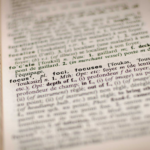Formatting the date and time can be a tricky task. Different countries use different formatting, making it confusing to localize dates and times. To make things more complex, certain countries, like Canada, combine more conventions for different date formats. Here are some considerations to take when formatting the dates and times for different audiences.
The Problem With Localizing Dates
Different locales have different preferences for how to display dates and times. While they could look similar, the differences can be significant. For example, the US American date format looks like: 12/29/2021 (MM/DD/YYYY). On the other hand, the British-English format switches the month and the days: 29/12/2021 (DD/MM/YYYY). While the example above makes it clear which number refers to the day and which refers to the month (since 29 cannot possibly refer to a month), the following examples are not so clear:
- US American: 10/08/2021
- British-English: 08/10/2021
As you can see, the dates above can cause confusion. Is the date October 8th, 2021 or is it August 10th, 2021? Well, that depends if you’re following the US American or British-English formatting.
Date Formatting in Different Countries
The US American and British-English formats are just the tips of the iceberg. There are even more formatting conventions in different countries. Here are some other common date formats in various parts of the world:
- Canada: YYYY-MM-DD (i.e. 2021-10-12)
- Italian: DD.MM.YY (i.e. 12.10.21)
- Thai: DD/MM/YYYY (i.e. 12/10/2021)
- Spanish: DD-MM-YYYY (i.e. 12-10-2021)
Even among these nations, there are variations and exceptions to these formatting conventions. This is why localizing dates. is often confusing.
Formatting Time
There are not as many variations on the convention for time, making it less confusing. There are generally two accepted time formats:
- 24-hour format: This format starts out with the hour and then the minutes. When it starts with a ‘0,’ it means it’s morning. For example, 02:23 would mean 2:23 in the morning. Most non-English speaking countries use this convention.
- 12-hour format: The 12-hour format only goes up to digit 12. It distinguishes morning and night with the Latin abbreviations AM and PM. For example, 2:23 AM. Most English-speaking nations (i.e. USA, Canada, and Australia) use this convention.
Using the ISO 8601 Date and Time Formatting
ISO 8601 is an international standard developed to help maintain consistency in date and time format. This standard is becoming more popular, with many countries adopting it as their primary convention. For dates, ISO 8601 formatting is: YYYY-MM-DD (i.e. 2021-11-20). For times, ISO 8601 formatting is: hh:mm:ss This notation makes it easier for translation and localization purposes. There is no need for translating text strings (i.e. ‘DEC’ or ‘FEB’, etc.). It is easy to read and understand. And, finally, this notation is widely used by other nations already (i.e. Korea, Sweden, Finland, Denmark, etc.).
Final Words
Proper translation and localization require you to know how to use an international date format and to adapt it to the local standards. Clearly, thorough localization of any game involves making sure the main elements and the additional ones are easily understood by your target audience. As part of our full suite of professional translation and localization services, SandVox can assist with this process, including advising you about the date and time formatting. Contact us today to learn more about how we can help you reach a global audience!






